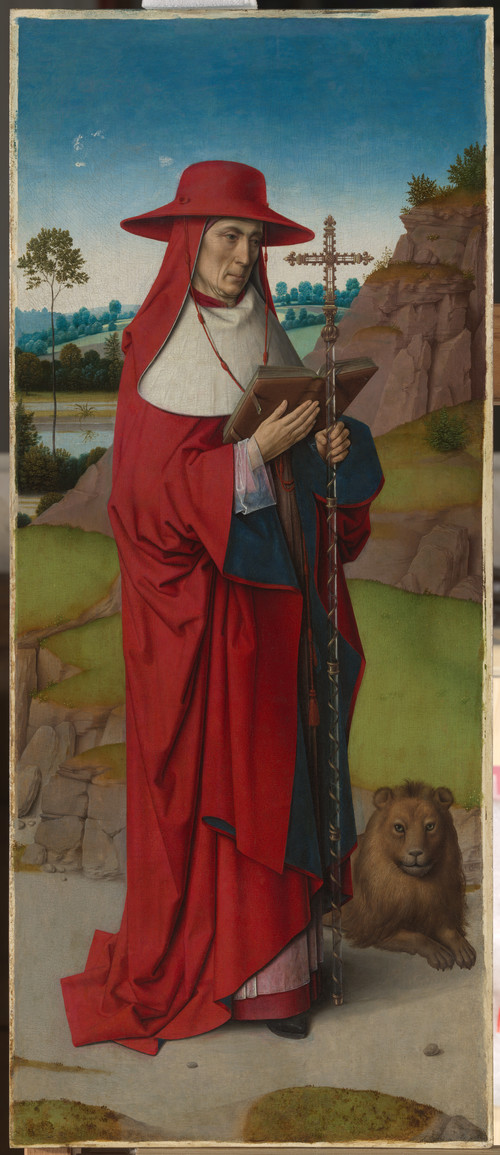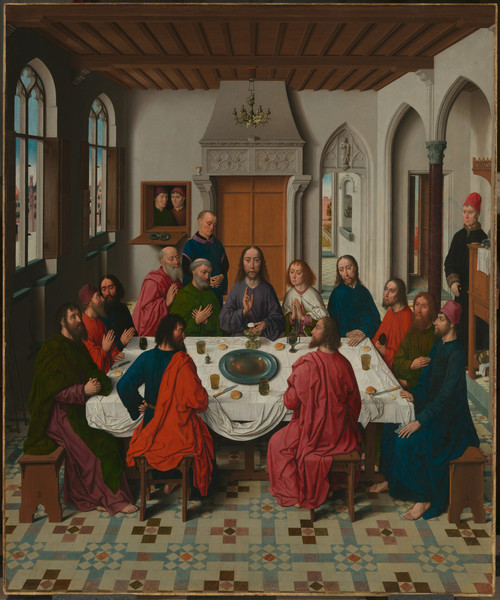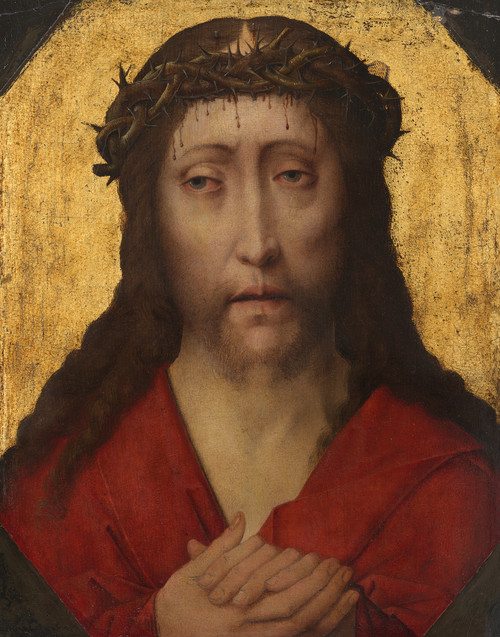Eleven questions on Dieric Bouts

WHAT YOU ALWAYS WANTED TO KNOW ABOUT LEUVEN'S MOST FAMOUS PAINTER
Eleven questions on Dieric Bouts
This autumn, M is organising a major retrospective around Dieric Bouts (circa 1410-1475), the painter behind 'The Last Supper'. We don't know very much about him, but what we do know is pretty intriguing.

Where did he come from?
It is often stated that Bouts was born in Haarlem, but that is by no means certain. The first reference to this is from the 17th century by the writer Karel van Mander, and we have no idea what he based it on. Nor do we know when Bouts was born, but we presume in the 1410s. It is not until 1448 that we first encounter his name in the Leuven aldermanic registers. These have been preserved more or less intact. We therefore suspect that Bouts was not a native of Leuven, as he otherwise presumably would have appeared in the registers at an earlier point.
So why did he come to Leuven?
Most likely because he could earn a good living here. In the mid-15th century, Leuven was experiencing a great boom, both economically and culturally. The university had just been founded, the foundation stone of the city hall had just been laid and the construction of St Peter's Church was halfway underway. For an ambitious young painter, it must have been an ideal place to settle down: a prosperous, entrepreneurial city with lots of potential clients.
Is it in fact Dieric or Dirk Bouts?
Until recently, we wrote 'Dirk', but that's just a more modern form of 'Dieric'. We now spell his name as we find it in old records.

How many paintings did he make?
Hard to say, as Bouts did not sign any of his work. However, the contract he entered into with the patron, the Brotherhood of the Blessed Sacrament, that commissioned ‘The Last Supper', has survived. As a result, we know with certainty that he is the painter. For the rest of his oeuvre, scholars rely mainly on stylistic similarities. Bouts had a fairly large workshop, he often only added the signature and it was apprentices or journeymen who finished the paintings. This also makes it difficult to attribute works with certainty to his own hand.
Was he already a famous painter in his time?
In Leuven he certainly was. In 1472, Bouts was appointed city painter in Leuven. That essentially involved the one main task of maintaining and repairing the floats of the famous annual Ommegang. But because Bouts enjoyed such good reputation, he did not have to do that personally. He did make paintings for the city and city institutions.
Who were his customers?
Bouts worked for the city's elite. The Brotherhood of the Blessed Sacrament, for example, for which he painted both 'The Last Supper' and the 'Martyrdom of St Erasmus'. For the city, he made two giant justice scenes. You can read more about them on page 17. But he also sold paintings to wealthy individuals. These were often interested in so-called 'attention pictures': smaller-sized religious paintings that you could hang in your home to use for prayer and meditation. These were very popular in the late Middle Ages. Bouts painted many of them and always had some in stock so customers could simply pop in and buy one from him. The 'Man of Sorrows' from M's collection is one great example.

Did he have a family?
Yes. He married Catharina van der Brugghen in 1448. She was nicknamed 'Metten Gelde' because she was so rich. Her network gave Bouts access to the city's elite – the only ones who could afford his paintings. He had two sons with Catharina, Albrecht and Dieric junior, both of whom would also become painters and work in their father's studio. The couple also had two daughters, who entered a convent. Following Catharina's death, Bouts remarried Elisabeth of Voshem, the widow of a Leuven mayor, in 1474. He would not enjoy his newly found happiness for long because barely a year later, he died.
Where did he live?
In a house on Minderbroedersstraat 5, now KU Leuven's 'Eygen Heerd' building. It has changed a lot since then, but there are still medieval traces preserved in the interior. Presumably, this is also where his workshop was. He even had a vineyard in the back garden. That in itself was not that exceptional – Leuven was known for its vineyards in the late Middle Ages – but it shows that he must have been a wealthy man.

Na het overlijden van Dieric schilderde zijn zoon Albrecht verder in de stijl van zijn vader. Voor dit werk baseerde hij zich op een zijpaneel van ‘Het Laatste Avondmaal’, foto: artinflanders.be, Dominique Provost
How important is he in art history?
Pretty important. Along with the Bruges native Petrus Christus, Bouts was the first painter in the Low Countries to work with the so-called vanishing point perspective. This means that all the perspective lines converge into a single point on the painting. Older painters, such as Jan van Eyck, worked with a more intuitive perspective, which, strictly speaking, is not quite right. The technique of the vantage point perspective had come over from Italy. Bouts never went there himself, but he may have found inspiration in the humanist library of Park Abbey, where quite a few tracts from Italy were kept. The technique would only become widespread half a century later, during the Renaissance.

Where can I see works by Bouts?
In museums around the world: London, Berlin, Madrid, Copenhagen, the United States... and at M, of course: the 'Man of Sorrows' is in our collection, and later this year we are organising a major retrospective. As many as two works by Bouts are still in the location they were once painted for: 'The Last Supper' and the 'Martyrdom of St Erasmus' can still be seen after more than five centuries in Leuven's St Peter's Church.

‘Man van Smarten’, Dieric Bouts, ca. 1470, M Leuven © KIK-IRPA
What will be on show at the Bouts exhibition at M?
To begin with, of course, many works by Bouts, his son Albrecht and his followers. ‘The Last Supper' and the 'Martyrdom of Saint Erasmus' are temporarily moved to M especially for the exhibition. But we also confront Bouts with 'image-makers' of today, his distant imitators so to speak: advertisers, cartoonists, film directors... You will be able to compare Bouts's landscape representations to the original storyboards of George Lucas's 'Star Wars' films. Both created a world that is not necessarily realistic, but still recognisable. Something to look forward to!

‘The Fall of the Damned’, Dieric Bouts, ca. 1450, Palais des Beaux-Arts, Lille © RMN-Grand Palais (PBA, Lille) / Stéphane Maréchalle | ‘Republic Attack Gunships on Geonosis’, Star Wars: Attack of the Clones (2002), digital concept art, Ryan Church © Lucas Museum of Narrative Art, Los Angeles
Dieric Bouts. Creator of images
From 20.10.23 to 14.01.24, M will present a major retrospective on Dieric Bouts in the context of the 'New Horizons | Dieric Bouts Festival'. Never before have so many works by the Flemish master been brought together in his hometown. By radically confronting it with today's visual culture, we also bring a completely new perspective on work that is more than five centuries old.



